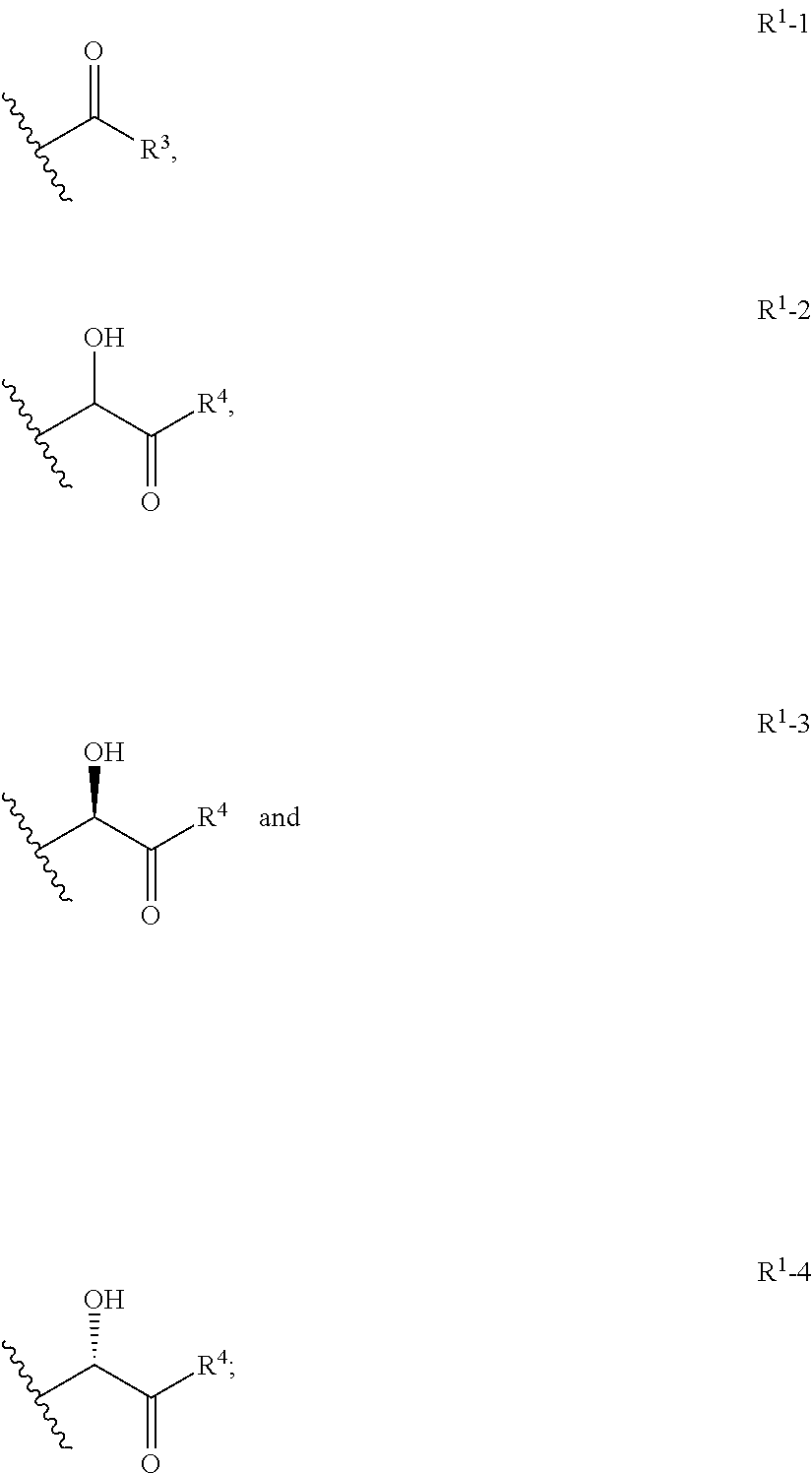Substituted pyridines as sodium channel blockers
a technology of sodium channel blocker and substituted pyridine, which is applied in the field of pyridine and pyrimidine compounds, can solve the problems of many undesirable side effects of the currently available treatments
- Summary
- Abstract
- Description
- Claims
- Application Information
AI Technical Summary
Benefits of technology
Problems solved by technology
Method used
Image
Examples
example 1
Synthesis of (R)-1-(6-(4-(4-fluorophenoxyl)phenyl)pyridin-2-yl)-2,3-dihydroxypropan-1-one (Compound 1)
[0266]
[0267]A solution of the 2,6-dibromopyridine (2.370 g, 10.00 mmol) in Et2O (50 mL) was prepared and kept under a nitrogen atmosphere. The mixture was cooled using a dry ice-acetone bath and 1.6 M nBuLi in hexanes solution (6.90 mL, 11.0 mmol) was added dropwise over approximately 4 minutes. After stirring for approximately 20 minutes, a solution of (R)-methyl 2,2-dimethyl-1,3-dioxolane-4-carboxylate (1.765 g, 11.02 mmol) in Et2O (5 mL) was added dropwise over approximately 2.5 minutes. After 4 hours over the dry ice-acetone bath, the reaction was quenched with 40 mL saturated NH4Cl solution and warmed up to ambient temperature. The reaction mixture was diluted with 50 mL Et2O, and the organic layer isolated, washed once with 25 mL brine, dried over MgSO4, filtered, and evaporated in vacuo to a residue. The residue was chromatographed over silica gel with 0-40% EtOAc in hexanes....
example 2
Synthesis of 2-(6-(4-(3-cyano-4-(trifluoromethyl)phenoxy)phenyl)pyridin-2-yl)-2-hydroxyacetamide (Cpd. No. 6)
[0274]
[0275]Trimethylsilyl cyanide (1.5 mL, 10.7 mmol) was added to a suspension of 6-bromopicolinaldehyde (1.0 g, 21.5 mmol, Accela Chembio), and ZnI2 (1.7 g, 21.5 mmol) in 45 mL of DCM at RT over 10 min. The mixture was stirred at room temperature over night. The solvent was removed under vacuum, and the residue was suspended in 10 mL of MeOH and 1 mL of 10 N H2SO4 was added. The mixture was stirred at room temperature for 1 h, then at 50° C. for 24 h. The reaction mixture was cooled with ice-water, and quenched with water (20 mL) and CHCl3 (100 mL) and taken to pH ˜9 with NH4OH (30% aq). The organic layer was washed with brine, concentrated and purified by chromatographed over silica gel with 30% EtOAc in hexanes to give methyl 2-(6-bromopyridin-2-yl)-2-hydroxyacetate as a yellow oil (0.5 g, 38%). LC / MS: m / z=246.0 / 248.0 [M+H]+.
[0276]A mixture of methyl 2-(6-bromopyridin-2-...
example 3
[0278]Representative compounds of the invention have been tested in the FLIPR® or FLIPRTETRA® sodium dye assay with KCl assay for sodium channel blocking activity, which is described in detail above. Representative values are presented in TABLE 4.
TABLE 4Evaluation of compounds as sodium channel (Nav) blockersCompoundNav1.7 Activity (μM)ExampleFLIPR assayNo.IC50 (μM) ± SEM10.133 ± 0.00520.365 ± 0.06530.402 ± 0.09640.136 ± 0.01650.149 ± 0.02360.722 ± 0.053
[0279]Having now fully described this invention, it will be understood by those of ordinary skill in the art that the same can be performed within a wide and equivalent range of conditions, formulations and other parameters without affecting the scope of the invention or any embodiment thereof.
PUM
| Property | Measurement | Unit |
|---|---|---|
| temperatures | aaaaa | aaaaa |
| pH | aaaaa | aaaaa |
| pH | aaaaa | aaaaa |
Abstract
Description
Claims
Application Information
 Login to View More
Login to View More - R&D
- Intellectual Property
- Life Sciences
- Materials
- Tech Scout
- Unparalleled Data Quality
- Higher Quality Content
- 60% Fewer Hallucinations
Browse by: Latest US Patents, China's latest patents, Technical Efficacy Thesaurus, Application Domain, Technology Topic, Popular Technical Reports.
© 2025 PatSnap. All rights reserved.Legal|Privacy policy|Modern Slavery Act Transparency Statement|Sitemap|About US| Contact US: help@patsnap.com



